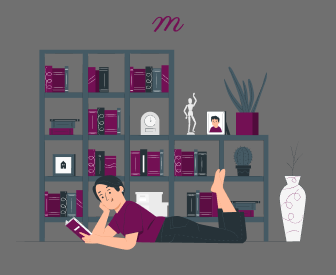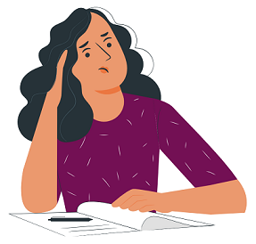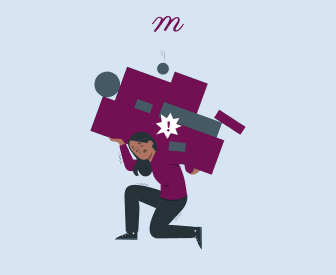Have your progress notes written for you automatically
Designing a Comfort Zone – Decor Tips for Therapists’ Office
Our surroundings have a profound impact on us. The surroundings are constantly providing our brain stimulus and the brain is constantly processing and drawing interpretations about it.
“Is it a safe space?” “Do I feel comfortable enough?”
The decor, color of the walls, lighting, and overall vibe of the space can either facilitate a sense of safety or inadvertently trigger feelings of unease, thereby impacting the therapeutic experience.
Close your eyes and think of your safe space – it can be real or imagined. What does this space look like? What elements are there? Is there a person there as well?
The idea of a safe space is to make us feel comforted and welcomed. Physiologically speaking, our body and mind must feel rested and at peace. When it comes to a therapeutic space, all the therapists want it to be perfect. For a lot of therapists, this idea is derived from Freud’s couch, which is considered the gold standard in the field of mental health. The idea of a counselor’s office goes beyond just a simple chair and table.
A study done by Devlin and Nasar in 2012 which found out that soft personalizations and orderliness are two important factors in determining clients’ perception of comfort and quality of care.
Soft: Comfortable spaces and textures for example – cushions and rugs
Personalization : Personal mementos, certificates
Orderliness: Tidy, spacious, and organized You might wonder : “But I don’t have any expertise in interior designing. Where do I start?”
Well, do not worry. We have got you covered. Here are some pointers you need to keep in mind when designing your very own therapy space – An article published on Spaces Taylored’s website discusses the following designs taking over office spaces.
For therapists looking to keep their office spaces trendy, this article is a valuable resource.
Let’s talk about how these trends can be incorporated into a mental health professional’s workspace:
Biophilic Design:
The idea behind biophilic design is to promote human and natural interaction. A study by Butabekova (2022) examines the fundamentals of biophilic design and highlights how it can have a good effect on several areas of human existence – productivity, emotional stability, physical health, and the construction of aesthetically pleasing spaces.
● Having a natural plant pot or several plant pots spread across the room will add an earthy touch to the room.
● Having fresh flowers in a vase will enhance the room with a pleasant fragrance and contribute to its natural elements.
● Having a window through which sunlight can penetrate will provide a soft and warm lighting to the room.
● Structures that blend in with the natural surroundings, such as walls covered in ivy, are also frequently well-liked and help integrate biophilic design into the therapeutic space.
This design strategy will help create a calm and peaceful environment for therapy to take place.
Inclusive and Diverse Design:
As mental health professionals, it’s essential to be mindful of the environment we provide for our clients. Therapists must recognize that they will work with individuals from marginalized or stereotyped communities. For instance, it’s crucial to ensure that the therapy space signals openness and inclusivity to clients from the LGBTQIA+ community.
● Having a ramp walk for the therapy space to be accessible to clients who use a wheelchair
● Having forms and intake materials that are inclusive in their text and offer pronouns and gender identification options
● Having a gender-neutral restroom facility
● Displaying a flag of the LGBTQIA+ community on the table or near the reception
Hybrid Work Environment:
Since the time of COVID-19, there has been a significant shift in how therapy sessions are conducted. Previously limited to in-person meetings, there has been a substantial increase in the number of online therapy sessions. The therapy space needs to be adaptable to the contemporary trends in the field of mental health. To ensure minimal disruption, therapists must facilitate a smooth transition between in-person and online sessions.
● Having a desk and chair setting to position the device on which online sessions will take place
● Having a computer/laptop with a functioning webcam and working mic.
● Having good speed internet to ensure flow in online therapy sessions
Tech-Infused Workspaces:
There is a need to make therapeutic space more tech-savvy. The mental health field needs to adapt to the rapidly changing times around them. “Technology in mental health space, WHAAAAA???”
● Having a room with a noise cancellation feature is crucial as it ensures that outside noise does not disturb the flow of a therapy session.
● Culturally speaking, in some countries like India having a ceiling fan is common, however, its noise might become a hindrance to the session. Having a centralized air conditioning system can be helpful.
● During the sessions, large touchscreen displays can be utilized for exercises and psychoeducation, any drawing activity or for viewing any audio-visual material together. The sessions may become more dynamic and interesting with these displays
Let’s talk about the elements that influence the therapeutic relationship –
Light Edwards & Torcellini (2002) found out that natural lighting helps in improving mood and wellbeing in individuals. Having large window panes in therapy room can help the light penetrate into the room, making it appear warm.
● Having brighter and lighter tone walls to reflect light. This will make the room look radiant and more welcoming.
● Having lights and lamps whose brightness can be adjusted. This gives the client the freedom to have a preference based on their mood.
● Warm and peaceful lighting can be incorporated with indirect lighting from lamps.
Colors Muted colors (washed out) and neutral tones are found to be associated with serenity and calmness in a therapeutic setting (Pressly & Heesacker, 2001). For example –
● Having pale blue or green walls will make the space feel serene and calm
● Use accent colors sparingly to add warmth and interest to the space. Consider incorporating these colors in artwork, throw pillows or rugs.
● Having cream-toned furniture to keep the space airy
● Adding artwork to the room will create a burst of color.
Seating The client will spend the majority of their time seated in the room. The seating options available to clients play a significant role in their therapy experience. Uncomfortable seating could lead to physical discomfort and detract from the overall therapeutic experience, becoming a source of distraction.
Some options to consider could be –
Couch: The couch offers clients versatile seating options, allowing them to sit upright, sit with their legs folded, or lie down, making it a multifunctional seating choice.
Armchair: Miwa & Hanyu (2006), found out that armchairs or sofas with amplecushioning and supportive backrests can help clients feel at ease. Having a rocking chair as a secondary seating option can be useful. It can potentially act as a great self-soothing tool for the client.
Bean Bags: they are casual and comfortable and can be utilized by the client based on their mood. It is a good supplemental seating option but not a primary one.
Floor cushions: sometimes sitting on the floor can be really grounding. Just having a few pillows and a carpet placed on the floor can give the client the freedom to decide their preferred area for taking the session.
Textures: Using multiple textures may bring depth and warmth to a place. Textures can activate multiple senses, which improves the entire therapeutic experience.
● Soft fabrics such as velvet for pillows or throws can add a cozy touch.
● Natural materials such as wood or stone can produce an organic atmosphere.
Miscellaneous Elements
Clock: A simple clock can help keep manage time during sessions without being distracting. The placement of the clock is crucial here. Some therapists keep two clocks, one in view of the client and one in view of the therapist. This is done to ensure both individuals can easily keep track of time.
Tissues: Keeping a box of tissues near the seating arrangement in the therapeutic space ensures that the client has access to them in times of emotional distress during therapy.
Candies: Having candies or chocolates near the reception area can be a nice welcoming gesture. Having candies in the therapy room can also be comforting. For example, it can be used as a positive reinforcement with children in the session or as an energy booster after an intense session.
Book Shelf: Having a corner in the room where you can display the books you have read and resource material that might come in handy during the session. This too can service as a great ice breaker.
Water: Having a pitcher of water or glasses available in the room as well as the waiting area to help your clients stay hydrated. In times of distress, drinking water mindfully can also help in grounding the client.
Personal Touches: Every therapist has a vibe and their therapy space must be able to reflect that. For example, if a therapist is a hardcore psychoanalyst the quotes in their room must also be reflective of psychoanalysts’ work. A personal touch adds humanness to the space- it evokes emotions. Some ways to make a private practice office reflective of the therapist’s persona could be:
● Displaying therapist’s certifications on the wall. This would add to the therapist’s credibility
● Adding an art piece that truly reflects the therapist’s preferences
● Having calm background music playing (when necessary). The music can reflect the tunes the therapist resonates with
● Having a picture of their dog. Something these items can act as a nice ice breaker. PHEWWW, SO MUCH INFORMATION!
Take a beak, move around, sip some water, and then you can get back to planning your therapy space!
Let this year, be the year where therapists are being mindful of how their space influences the quality of the therapeutic relationship. Clarity in the environment facilitates clarity of mind. Now, this can be useful not just for the client but also for the counselor. Since this is the room where the counselor is going to spend most of their day listening to the concerns of other individuals, the room must be welcoming to the compassion fatigue, emotional overwhelm, and catharsis of the counselor as well. Good luck!










